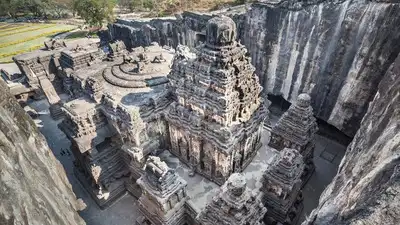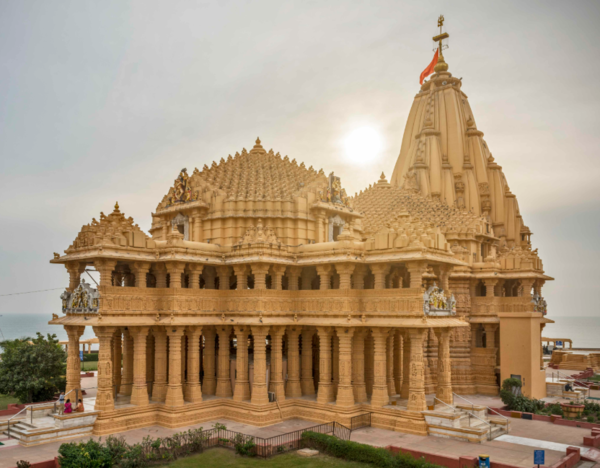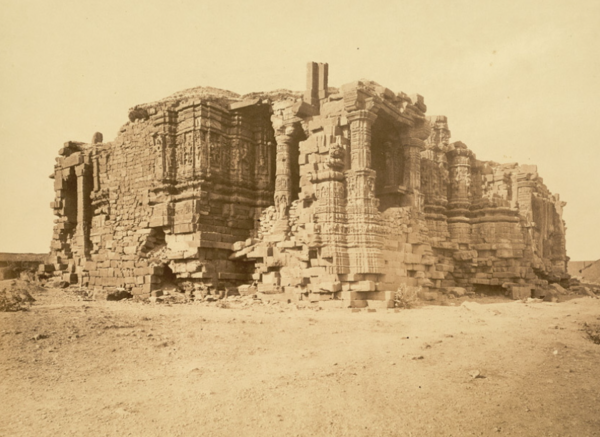ARTICLE AD BOX

The legends and mysteries surrounding Sanatan Dharma and its temples often travel into realms far beyond human understanding. These stories have been passed down through generations, and frequently describe the stories of Indian Scientific thought, mentioned in the Purana and sacred books before the Western world could even discover it.Yet there are several events and structures that challenge our basic understanding of physics, engineering, and the natural world without going into great detail. While temples are seen as places of worship, some ancient Indian temples are actually threads of philosophy, cosmology, and science woven into the fabric of time and mysteries. In the Hindu tradition, where God is believed to reside in everything from the vast cosmos to the tiniest atom, such marvels provide for both spiritual and intellectual wonder.Still, there are some legendary stories of places which remain unproven by science and whose origins are not defined or registered in history books, be it the floating stones used to build Lord Rama’s bridge or the gravity-defying idols. Among such are two extraordinary legends of the levitating Shiva-Linga of Somnath and the floating Sun idol of Konark, which continue to ignite interest in the minds of historians, scientists, and devotees.
The levitating Shiva-linga of Somnath
The Somnath temple, situated on the western coast of Gujarat, is one of the twelve sacred Jyotirlingas of Lord Shiva. While history remembers it mainly for Mahmud of Ghazni’s infamous raid in 1025 AD, a lesser-known yet astonishing aspect is the legend of its levitating Shiva-Linga.

A Persian geographer Zakariyah Al Kazvini said as mentioned in research article, “Unlocking the ancient secret of the levitating Shiva-lingam of the Somnath Temple”, published in International Journal of History, “This idol was in the middle of the temple without anything to support it from below, or to suspend it from above… whoever beheld it floating in the air was struck with amazement…”As mentioned in the same article, the idol floated in mid-air, likely due to a clever arrangement involving a canopy made of lodestone or a natural magnet and the Linga made of a strongly magnetic iron-nickel meteorite.
This was not just legend; historical sources such as Abulfeda and Farrukhi Sistani confirmed the idol’s extraordinary material hardness, consistent with meteorites.Scientific analysis in the article explains that this phenomenon may have involved a magnetic levitation system. Due to the restrictions of Earnshaw’s Theorem, stable magnetic levitation is only possible when diamagnetic materials like bismuth are used.
The article also mentions that bismuth, often mistaken for lead due to its appearance, was used in the temple’s structure, “The edifice was built upon fifty-six pillars of teak, covered with lead,” said Zakariyah Al Kazvini.

Modern comparisons show bismuth has a much stronger diamagnetic property than lead. This diamagnetic reaction could have stabilised the magnetic field, allowing the heavy Shiva-Linga to levitate.
The theory is based on references to ancient Indian metallurgical expertise, like the famed wootz steel and ancient zinc smelting at Zawar. Bismuth, although rare, was likely extracted as a byproduct of lead from mines in nearby Rajasthan.
The floating Sun Idol of Konark Temple
The Konark Sun Temple in Odisha, which was built by King Narasimhadeva I between 1243–1255 AD is another mystery laced with legendary stories. The temple was originally situated by the sea and was said to house a Sun idol that floated in mid-air within its main sanctum.
According to the Konark official website, “The statue of the Sun God inside the temple was built of a material with iron content and was said to be floating in air, without any physical support, due to the unique arrangements of the top magnet, the bottom magnet and the reinforced magnets around the temple walls.
”

The temple’s architectural design had embeddings of iron plates between stone layers and a massive 52-ton lodestone, which was placed at the top of the temple’s main tower.
The magnetic field, legend says, held the iron-rich idol suspended in mid-air. The alignment was such that the first sunray would fall directly on the deity through the Nata Mandir, reflecting off a diamond placed on the idol's crown.

Another widely circulated belief claims that the magnetic field disturbed the navigational compasses of passing ships. To prevent disruption, Portuguese sailors allegedly removed the lodestone, leading to the collapse of the temple’s main tower, or Deul. Though no concrete evidence remains of the lodestone today, local guides still tell these legends to visitors, and the mystery persists.Certainly, what modern science is now slowly catching up to explain is something marvelous that our ancestors may have achieved centuries ago!



.png)
.png)
.png)
















 4 hours ago
5
4 hours ago
5









 English (US) ·
English (US) ·